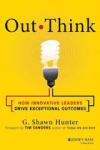“There’s no way to institutionalize or “corporatize” niceness…. It has to come from the top, and from there it will filter down…”
We live in a world where information travels quickly and powerfully. Nothing happens—good or bad—without the world knowing it. In his book Nice Companies Finish First: Why Cutthroat Management is over—and Collaboration Is In, author Peter Shankman shows how famously nice executives, entrepreneurs, and companies are setting the standard for success in this new world. He goes in-depth with nine hallmarks of effective leadership:
 Trait #1—Enlightened Self-Interest: Creates a system where people feel secure but also accountable; where everyone feels confident enough to say, “I made a mistake.”
Trait #1—Enlightened Self-Interest: Creates a system where people feel secure but also accountable; where everyone feels confident enough to say, “I made a mistake.”
Trait #2—The Accessibility Factor: Shows commonsense respect and openness for and with colleagues, direct reports and rank-and-file workers and establishes a feeling of workplace equality.
Trait #3—Strategic Listening: Makes sure they understand what someone is saying instead of taking words and forgetting them later. Acts on what they see and hear in the marketplace.
Trait #4—Good Stewardship: Seeks, first and foremost, to be a good neighbor; chooses stewardship that fits with and reflects well on the business.
Trait #5—Loyalty: Allows for and encourages professional growth of employees; provides flexibility for motivated, productive workers; lets employees fail and ensures that everyone learns the lessons within the failure.
Trait #6—Glass-Half-Full POV: Acts enthusiastically about the possibilities, but is not blind to the problems. Is action-oriented, takes time to consider all options and makes timely decisions.
Trait #7—Customer Service-Centric: Practices what he or she preaches; gives the team permission to solve customer problems; knows the audience—it’s not about who you think you are, it’s about what your customer thinks.
Trait #8—Merit-Based Competitor: Observes the marketplace and examines data for competitive insights; provides customers with new reasons to return; finds new, fun ways to make change work.
Trait #9—Gives a Damn: Makes decisions based on shareholder value and impact on corporate integrity; does what’s right even if it’s not obviously profitable; accepts ultimate responsibility.
Mr. Shankman shows how leaders like JetBlue’s Dave Needleman, Andrew Taylor of Enterprise Rent-A-Car and Ken Chenault of Amex practice these traits to build productive, open, innovative and positive workplaces for the benefit of customers, employees, stockholders, and the bottom line. Your organization’s growth and success will increase as you apply these principles.
This book has scores of stories that illustrate how nice people and companies finish first. It’s a must-read for every leader who wants to create a successful, long-term organization.
—
The Product Management Perspective: It goes without saying that nice product managers have more success. Your success depends on others doing their work in the best way possible. Take Mr. Shankman’s words to heart as you take your next product to market.




